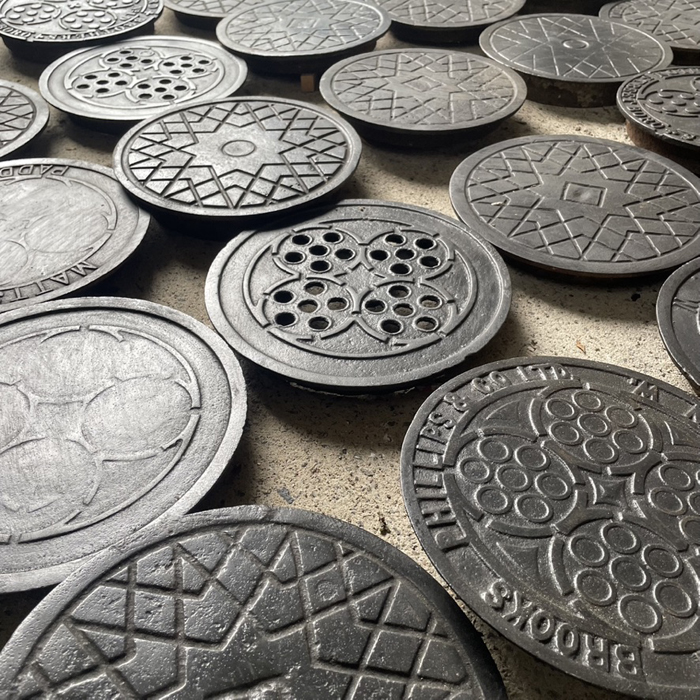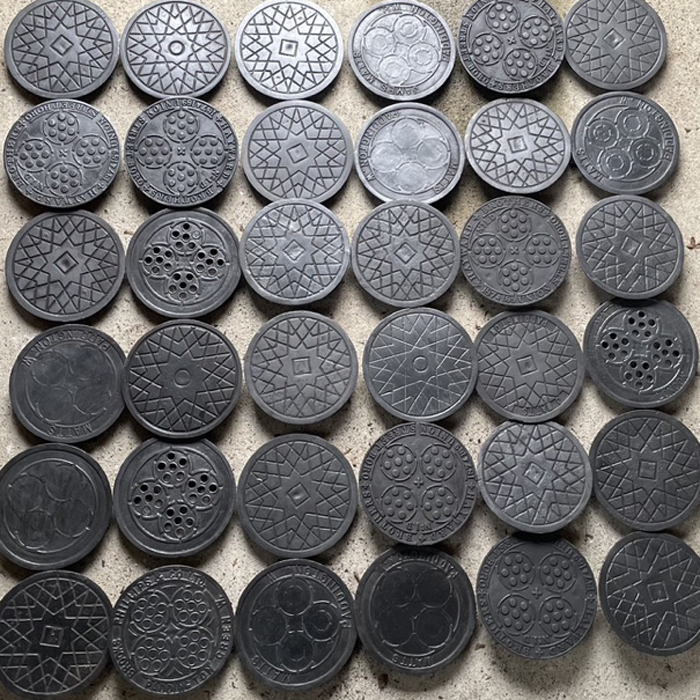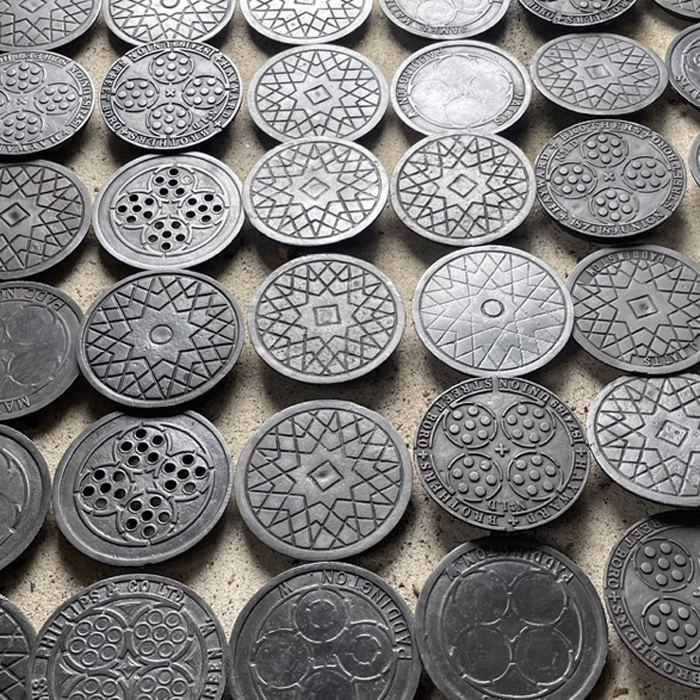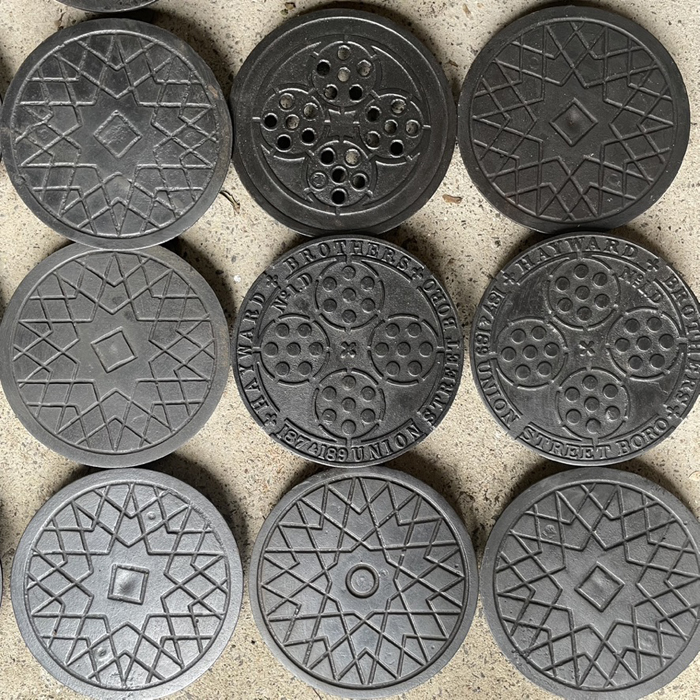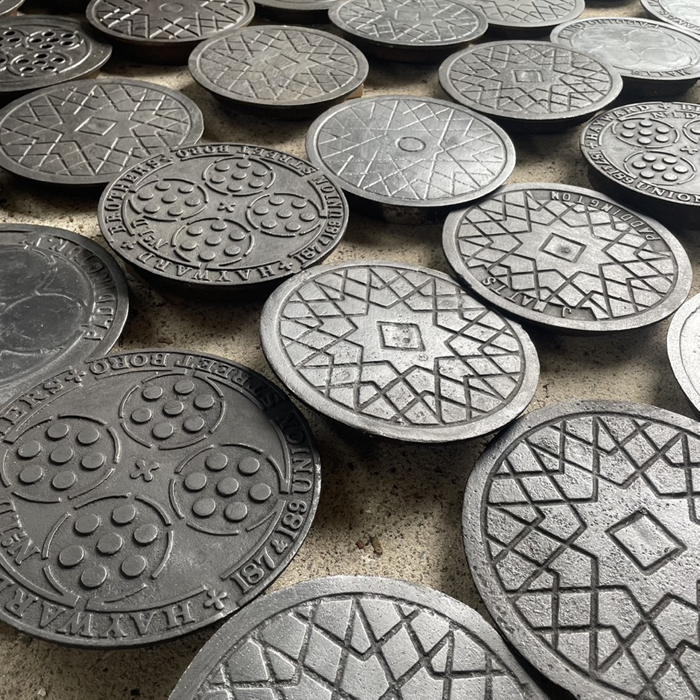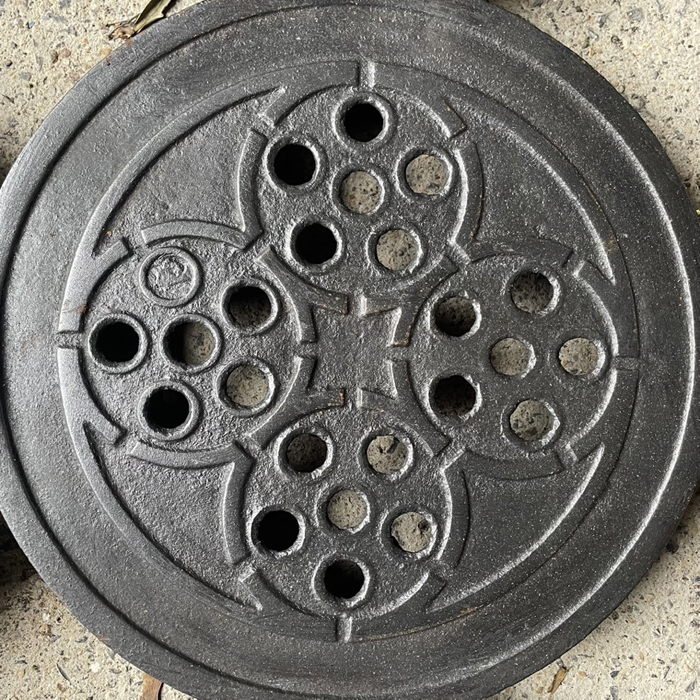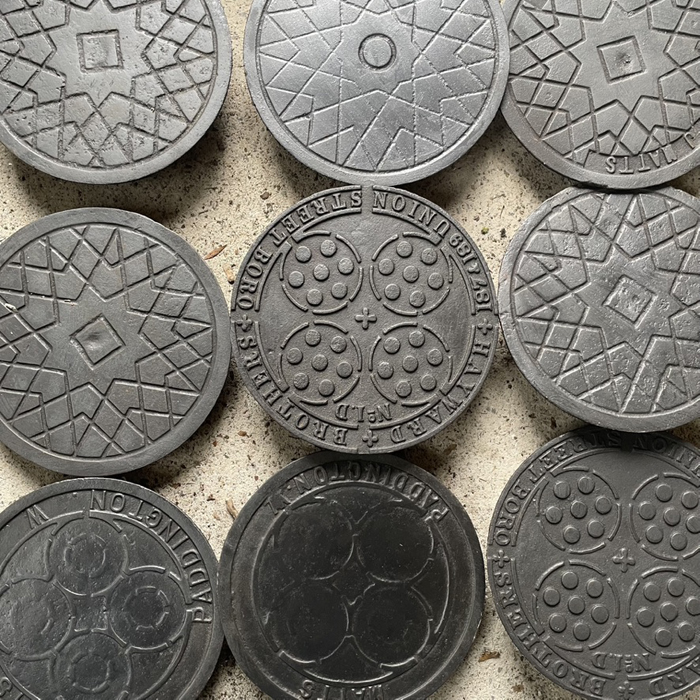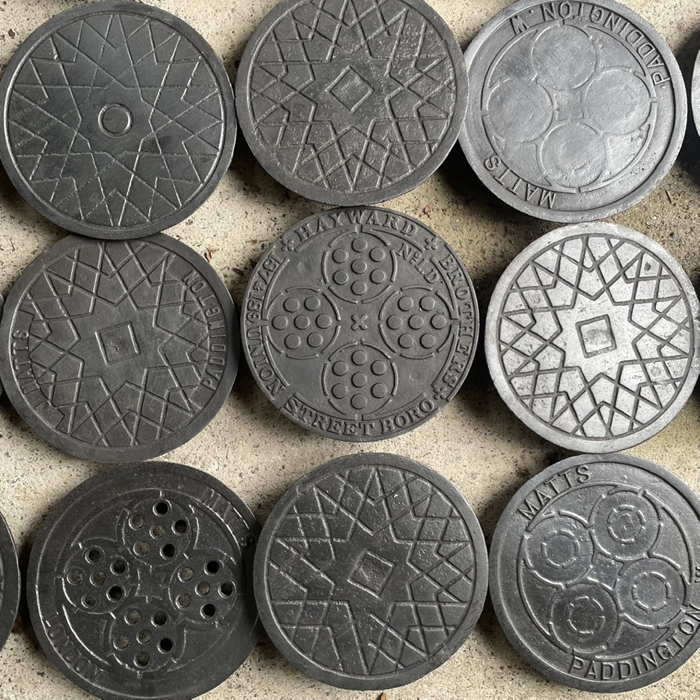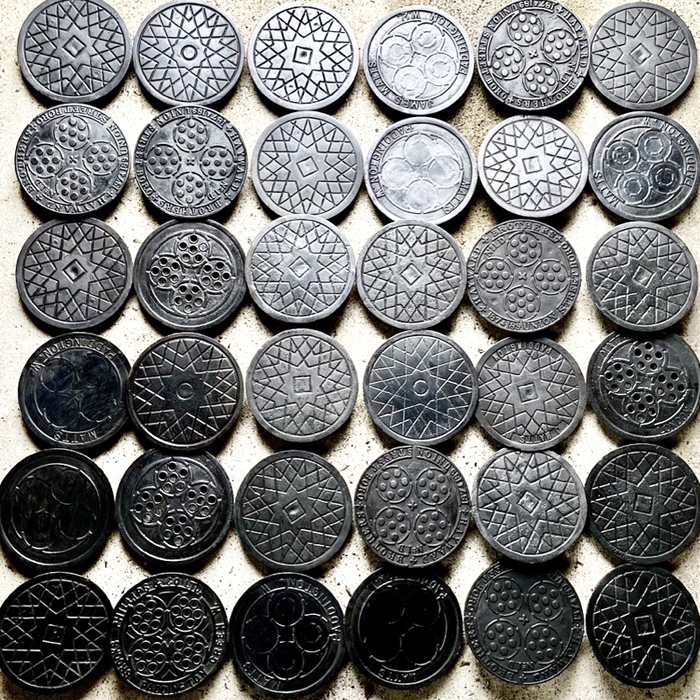No products in the basket.
A collection of Victorian cast iron coal-hole covers: 36No.”Opercula”
removed from the London pavements by Local authorities and sold to a collector,
each circular disk cast in relief with geometric lines or circles, some pierced with ventilation holes, some bearing the maker's name including "Brooks, Phillips and Co of Paddington Green W.", "Hayward Bros." and "Matts"
£3,850 the lot (36)
Whilst Opercula may seem to be the most utilitarian of objects, and anachronistic at that, they have developed quite an enthusiastic following in the last fifty years. Opercularists, past and present, include Sir John Betjeman, Jeremy Corbyn and many others. Exhibitions of Coal-hole covers have appeared in Mayfair art galleries; enthusiasts can be seen taking rubbings of the surviving examples on British and Irish pavements. We get asked for them both by collectors and by those merely wishing to replace their broken ones.
As a collection they offer a fantastic opportunity to present them as a grid – whether setting them into a pavement – whether an interior lobby or bar or boot-room, or perhaps as a display – a back-bar, bar-front or even bar top.
The coal-hole cover was part of the repeated format of Georgian and Victorian terraces and, rather neatly, enabled the delivery cart to send coal through the operculum into a chute to the coal bunker in the basement level – the coal cellar either backing onto or underneath the pavement or entrance path – without traipsing coal dust through the house. Being on the pavement, the iron lid needed to be flat but with grip and needed to stay in place to prevent injury (the hasp on the underside would have had a chain preventing the lid being lifted other than on delivery day). The inventive geometric designs were amazing in their design and complexity – the different designs presumably helped the coal-man differentiate between clients as he went on his round. The coal-hole cover was ubiquitous – so it was a big market for local foundries vying to get the attention of both householders and builder-speculators with their wide range of eye-catching designs.
Some bear the founders’ name, but not all. Some are Haywards – a vast operation in Southwark – who styled theirs “The Hayward’s Patent Non-slip Coal Plate” and their range was split into three types: “Solid”, “Ventilating” (with holes) and “Illuminating” (with prismatic glass lenses inset – allowing some light into the coal cellar) and each in three different sizes 12″, 14″ (as here) and 16″.
More on the subject is explained in a piece by Bethan Bell for the BBC in May 2021 – click here
And an entertaining podcast on the subject – Number 49 of “The Boring Talks” – one of a series of podcasts by self-confessed nerds expanding on their passions.

